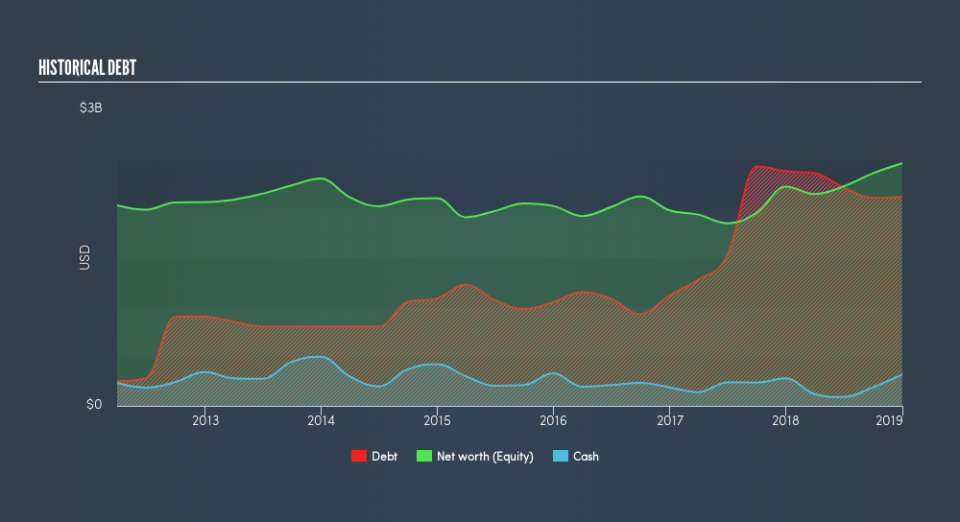Church & Dwight Co., Inc. (NYSE:CHD): Time For A Financial Health Check

The size of Church & Dwight Co., Inc. (NYSE:CHD), a US$16b large-cap, often attracts investors seeking a reliable investment in the stock market. Market participants who are conscious of risk tend to search for large firms, attracted by the prospect of varied revenue sources and strong returns on capital. However, the key to their continued success lies in its financial health. I will provide an overview of Church & Dwight’s financial liquidity and leverage to give you an idea of Church & Dwight’s position to take advantage of potential acquisitions or comfortably endure future downturns. Note that this commentary is very high-level and solely focused on financial health, so I suggest you dig deeper yourself into CHD here.
See our latest analysis for Church & Dwight
CHD’s Debt (And Cash Flows)
CHD’s debt levels have fallen from US$2.4b to US$2.1b over the last 12 months , which includes long-term debt. With this debt payback, the current cash and short-term investment levels stands at US$317m to keep the business going. Moreover, CHD has generated US$764m in operating cash flow over the same time period, resulting in an operating cash to total debt ratio of 36%, meaning that CHD’s current level of operating cash is high enough to cover debt.
Does CHD’s liquid assets cover its short-term commitments?
With current liabilities at US$1.3b, the company arguably has a rather low level of current assets relative its obligations, with the current ratio last standing at 0.81x. The current ratio is the number you get when you divide current assets by current liabilities.
Can CHD service its debt comfortably?
CHD is a relatively highly levered company with a debt-to-equity of 86%. This isn’t surprising for large-caps, as equity can often be more expensive to issue than debt, plus interest payments are tax deductible. Accordingly, large companies often have lower cost of capital due to easily obtained financing, providing an advantage over smaller companies. We can assess the sustainability of CHD’s debt levels to the test by looking at how well interest payments are covered by earnings. A company generating earnings before interest and tax (EBIT) at least three times its net interest payments is considered financially sound. For CHD, the ratio of 10.22x suggests that interest is comfortably covered. It is considered a responsible and reassuring practice to maintain high interest coverage, which makes CHD and other large-cap investments thought to be safe.
Next Steps:
Although CHD’s debt level is towards the higher end of the spectrum, its cash flow coverage seems adequate to meet debt obligations which means its debt is being efficiently utilised. But, its lack of liquidity raises questions over current asset management practices for the large-cap. Keep in mind I haven’t considered other factors such as how CHD has been performing in the past. You should continue to research Church & Dwight to get a better picture of the stock by looking at:
Future Outlook: What are well-informed industry analysts predicting for CHD’s future growth? Take a look at our free research report of analyst consensus for CHD’s outlook.
Valuation: What is CHD worth today? Is the stock undervalued, even when its growth outlook is factored into its intrinsic value? The intrinsic value infographic in our free research report helps visualize whether CHD is currently mispriced by the market.
Other High-Performing Stocks: Are there other stocks that provide better prospects with proven track records? Explore our free list of these great stocks here.
We aim to bring you long-term focused research analysis driven by fundamental data. Note that our analysis may not factor in the latest price-sensitive company announcements or qualitative material.
If you spot an error that warrants correction, please contact the editor at editorial-team@simplywallst.com. This article by Simply Wall St is general in nature. It does not constitute a recommendation to buy or sell any stock, and does not take account of your objectives, or your financial situation. Simply Wall St has no position in the stocks mentioned. Thank you for reading.

